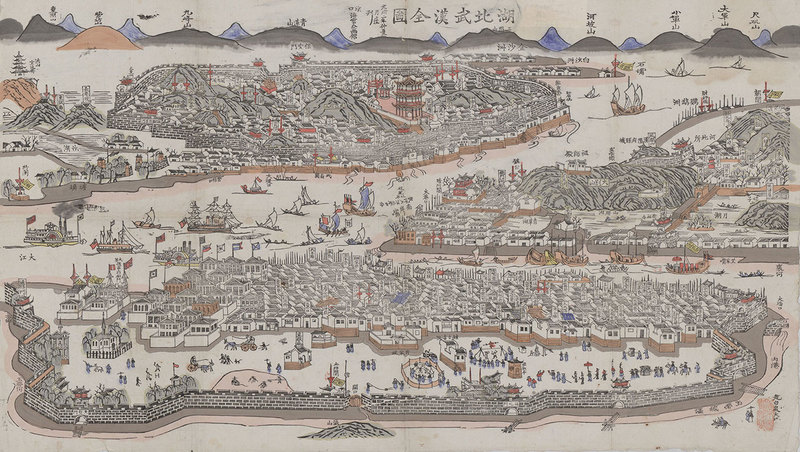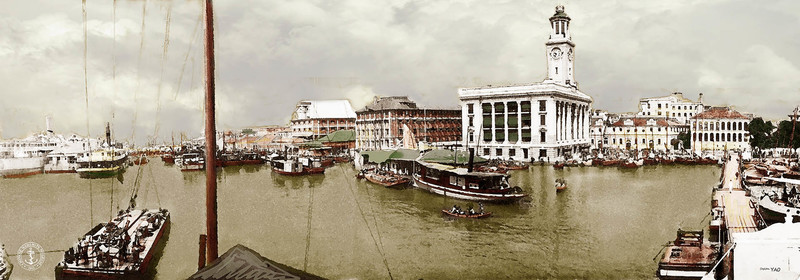Building the Bund

Map of Wuhan [Hubei Wuhan quantu]
Map of Wuhan from 1877. Hankou sits in the foreground, with the British Concession identifiable by its church and flags in the lower left corner.
Hankou’s foreign concessions, which together formed a continuous stretch of ambiguous territory bordering the Chinese city’s northeast side and running along the bank of the Yangzi, shaped the city and its history from their founding and long after their reincorporation. Divided amongst the five colonial powers which administered them (Britain, Russia, France, Germany, and Japan), the concessions provided space for burgeoning imperial enterprises, sites for contestation and protest, and sanctuary for revolutionaries and refugees alike. This unit begins with the founding of the British concession, the lives of its early inhabitants, and how, for its first 30 years, it oscillated between vacant ghost town and bustling port. Following this we discuss the changes brought about by the Treaty of Shimonoseki, including the growth and diversification of concessions and industries, and the blurring of borders between Chinese and foreign practices. The next section dives into the concessions’ roles as sites of contestation for nascent Chinese nationalism while simultaneously serving as sanctuaries for revolutionaries and rebels, and further covers the conflicts surrounding the reincorporation of the German, Russian, and British concessions. We further trace the changing positions of the remaining French and Japanese concessions during World War II, examining new narratives brought about by isolation and turmoil. Finally, we conclude with a discussion of Hankou’s bund today, as a site of memory, nostalgia, and reimagination. Throughout these sections we explore the differing roles of the concessions as physical spaces and structures, avenues for activity and interaction, and symbols of nationalism, differentiation, and imperialism. Thus, particular attention will be paid to the role of space – in the form of architecture, urban planning, and administrative boundaries – in the concessions’ histories and their interactions with Hankou and Wuhan. To counterbalance the significance this approach gives to Western-constructed space, we further aim to place the concessions in a wider context of the Hankou as sites of contestation and the subjects of Chinese reactions and interactions.
